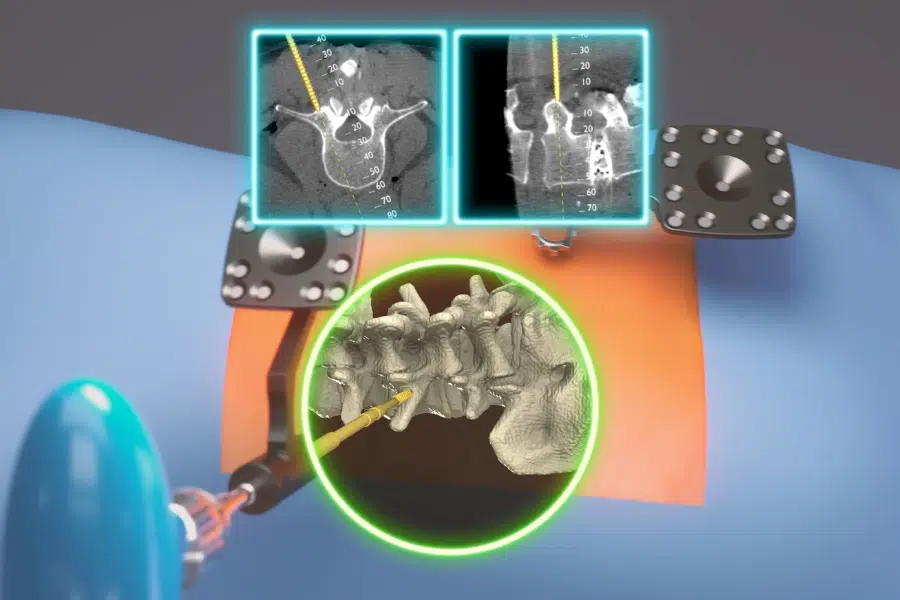xvision marks the spot: Groundbreaking augmented reality technology makes surgeries easier, faster, and safer


Not all heroes wear capes – at New Jersey Brain & Spine, they have scrubs instead to go with their X-ray vision.
Neurosurgeons and practice co-founders Patrick A. Roth, MD, and Roy D. Vingan, MD, have joined an elite group of U.S. physicians to use new augmented reality (AR) technology, making them the first in the Garden State to offer more accurate and personalized implant placement. The FDA-cleared Augmedics xvision Spine System is the first AR navigation system to be used in surgery for both open and minimally invasive spine implant procedures.
“It’s kind of a ‘wow moment,’ like looking through a telescope and seeing the stars. Suddenly, the world is open to you in a different way,” describes Dr. Vingan. “Augmented reality allows us to advance what we can see inside the spine with pinpoint accuracy to accurately guide instruments and implants in the least invasive way. It is a navigation tool that gives us information in the operating room that is deeper than traditional methods.”
Conventional operating methods can increase exposure to radiation for both patients and surgical teams, and freehand methods are associated with complications due to close proximity to patients’ neural and vascular structures. But the xvision Spine System features a transparent near-eye-display headset to determine the position of surgical tools in real-time and superimpose them on a patient’s CT scan data. The navigation data is then projected onto the surgeon’s retina using the headset, allowing him or her to simultaneously look at both the patient and the data.
Simply put, the results of a surgical AR system for those on or around the operating room table are significant. Surgeons can keep their focus honed, as opposed to other methods that have a separate screen displaying a patient’s anatomy during procedures. Better control and visualization may lead to easier, faster and safer surgeries.
The benefits are plentiful for those under his care or that of Dr. Vingan, notes Dr. Roth. “For patients, added accuracy and tactile feedback for their surgeon means smaller exposures, less pain, and greater precision,” said Dr. Roth. “The accuracy is phenomenal, and we are extremely proud to be among the first surgeons to offer this amazing technology.”